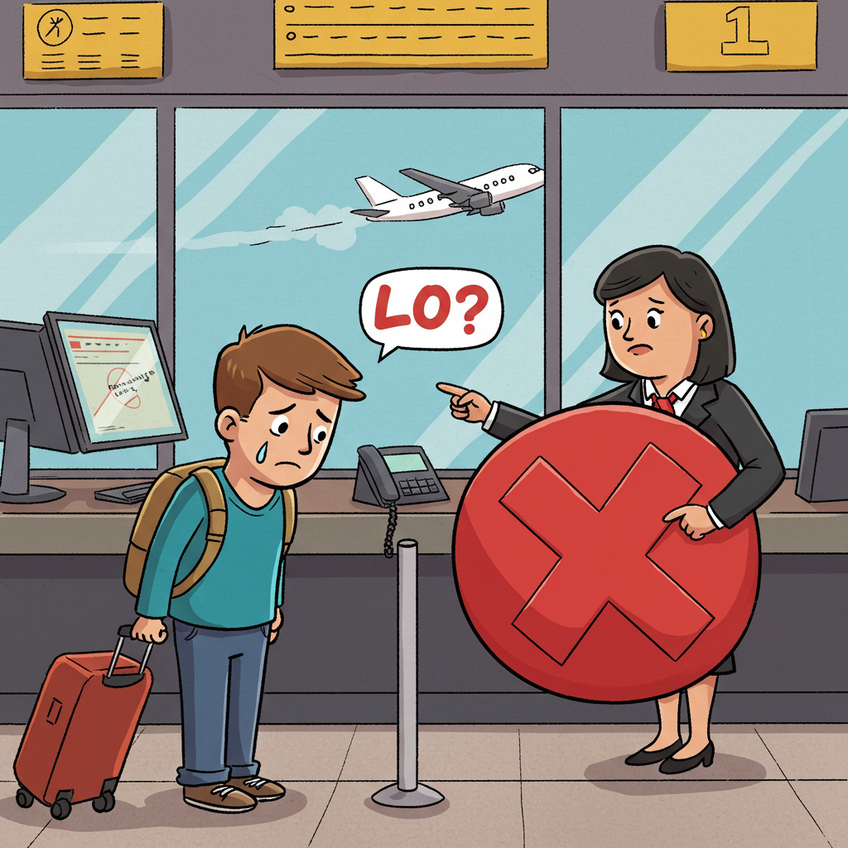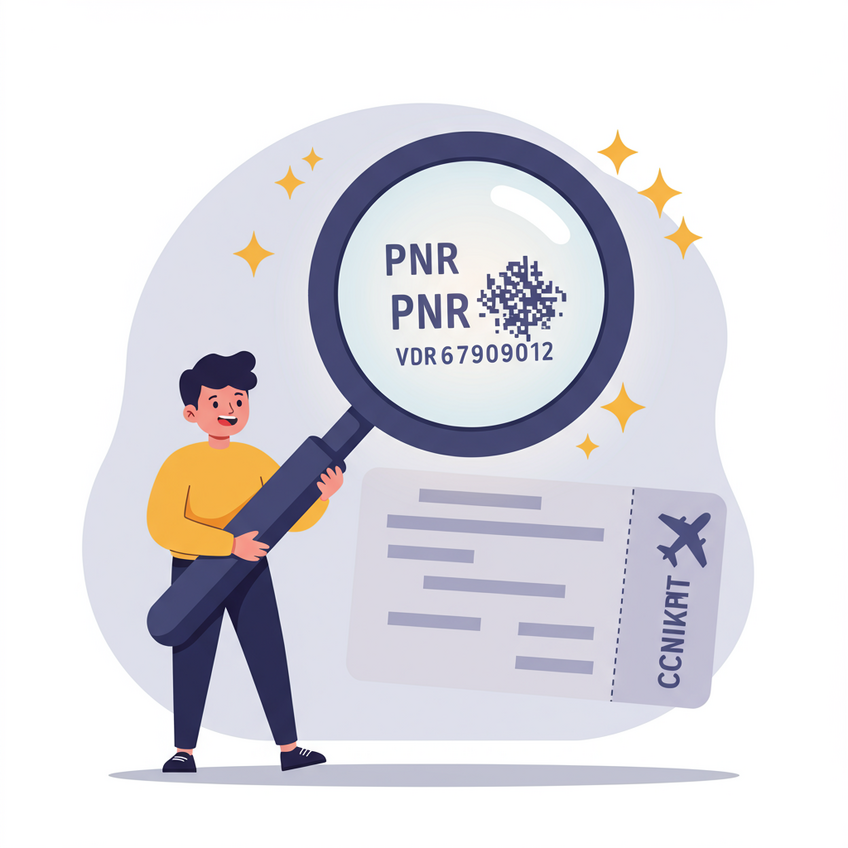There’s a unique dread that every seasoned traveler knows: the moment the check-in agent pauses, squints at their screen, and says, “I can’t check you in. You don’t have proof of onward travel.” Your heart sinks. Your perfectly laid plans are about to crumble, all because of a rule you thought you could bypass. This isn’t a rare occurrence; countless travelers are denied boarding every year because of this simple, yet widely misunderstood, requirement.
The confusion is understandable. The rules are inconsistent, official information is scattered, and the stakes—missing your flight and losing your money—are incredibly high. But it doesn’t have to be this way.
This is the only guide you need to understand the specific onward ticket differences between two of the world’s most popular travel destinations: Europe and Asia. We will demystify the rules, show you legitimate ways to meet them, and introduce a guaranteed method to get a verifiable onward ticket, eliminating your travel anxiety for good.
What is an onward ticket and why do you need one?
Defining ‘proof of onward travel’ (POT)
Proof of onward travel (POT) is simply evidence that you have a booking to leave a country within its permitted visa timeframe. It’s the immigration authority’s assurance that you don’t plan to stay illegally. A common misconception is that this has to be a return ticket to your home country. In reality, it can be a ticket to any other country, as long as you have the legal right to enter it. For travelers on multi-stop journeys, this is a critical distinction. An onward flight ticket is the most common and accepted form of POT.
The airline’s role: why they are the primary enforcers
Here is the most important thing to understand: it is almost always the airline, not the immigration officer at your destination, that will deny you boarding for not having an onward ticket. Why? Airlines face heavy fines from countries if they transport a passenger who is later denied entry for not meeting the visa requirements.
To protect themselves, airlines meticulously check your documentation against the official IATA Travel Centre requirements before they even let you on the plane. This database tells them exactly what each country demands, and they follow it to the letter. If the system says “proof of onward travel required,” and you don’t have it, they won’t issue a boarding pass.
The real risk: denied boarding vs. denied entry

The two terms sound similar, but they happen at very different stages of your journey.
- Denied Boarding: This happens at your departure airport, before you even take off. You lose the money for your flight, your bags are offloaded, and your travel plans are thrown into chaos. This is by far the most common consequence of not having an onward ticket.
- Denied Entry: This happens at the immigration checkpoint of your destination country. An immigration officer refuses to let you into the country. This is much rarer but more serious, as the airline is then responsible for flying you back, often at your own expense.
Think of an onward ticket as a simple, cheap insurance policy against the financial loss and immense stress of being denied boarding.
Who needs proof of onward travel?
While any traveler could technically be asked, this requirement is most critical for certain groups. Digital nomads, long-term backpackers, tourists traveling on one-way tickets, and anyone with a flexible itinerary should always be prepared. You will almost certainly need it when applying for a formal visa, entering a country that grants a visa-on-arrival, or flying on a one-way ticket where your exit plans aren’t obvious.
A tale of two continents: onward ticket rules in Europe vs. Asia

The rules for onward travel are not universal. The expectations and enforcement levels differ dramatically between Europe’s Schengen Area and the popular travel hubs of Asia.
Onward tickets in Europe’s Schengen Area: the 90/180 day rule
For non-EU nationals visiting Europe’s Schengen Area, the primary concern is the 90/180 day rule—you can only stay for 90 days within any 180-day period. To ensure you comply, airlines may ask for proof that you intend to leave before your 90 days are up. According to the official EU entry requirements, you may be asked to present a return or onward ticket.
Historically, enforcement has been inconsistent, but with the rollout of new systems like the European Travel Information and Authorisation System (ETIAS), checks are becoming stricter. A key difference in Europe is that proof of exit can often be a bus or train ticket to a non-Schengen country. For example, a bus ticket from Spain to Morocco or a train ticket from Hungary to Serbia can satisfy the requirement, reflecting the integrated nature of European ground travel. Always check the specific rules for traveling in Europe’s Schengen Area before you fly.
Onward tickets in Southeast Asia: strict, country-by-country enforcement
In contrast to Europe, many Asian countries, especially in Southeast Asia, have very strict and consistently enforced onward ticket policies for travelers arriving by air.
- The Philippines: Notoriously strict. You are very likely to be asked for proof of an onward flight at check-in, especially when flying with airlines like Cebu Pacific. Without a valid onward ticket, boarding is almost always denied.
- Thailand: Required for most visa exemptions and visas on arrival. If you enter on a 30-day visa exemption, the airline will want to see a confirmed flight out of the country dated within that 30-day period.
- Indonesia (Bali): Similar to Thailand, proof of an onward flight is a standard requirement for those using the visa-on-arrival or visa exemption facilities.
Crucially, for air travel into these countries, a bus or train ticket is almost never accepted. You must have an onward flight ticket. If you are flying to Manila, Bangkok, or Bali, you should treat keywords like onward ticket philippines, onward ticket thailand, and cebu pacific proof of onward travel as non-negotiable rules.
Key differences at a glance: Europe vs. Asia
| Feature | Europe (Schengen Area) | Key Asian Countries (PH, TH, ID) |
|---|---|---|
| Enforcement | Inconsistent, but increasing | Strict and consistent |
| Primary Reason | Adherence to 90/180 Day Rule | Visa on Arrival / Exemption Rules |
| Accepted Proof | Flight, Train, or Bus Ticket | Almost always a Flight Ticket |
| Flexibility | Higher | Lower |
The trust signal: how to verify your PNR and avoid onward ticket scams
In the world of onward tickets, the only thing that matters is legitimacy. The key to legitimacy is a small, six-character code: the PNR.
What is a PNR and why is it your proof?

A PNR, or Passenger Name Record, is the unique 6-character alphanumeric code for your reservation in an airline’s official system. When a check-in agent looks up your travel details, they use the PNR. A real, verifiable PNR is the only way to be 100% certain that your onward ticket is legitimate and will be accepted by airline staff. Without it, you just have a document; with it, you have proof.
Step-by-step: how to check your PNR on any airline’s website
This simple PNR verification process is your shield against scams and your key to traveling with confidence.
- Receive your onward ticket confirmation. It must contain the airline name and the 6-character PNR.
- Go to the official website of the airline listed on your ticket (e.g., Singapore Airlines, Turkish Airlines, Qatar Airways). Do not use a third-party site.
- Navigate to the “Manage Booking,” “My Trips,” or “Check Reservation” section of the airline’s website.
- Enter your PNR and your last name as it appears on the ticket.
- If the system pulls up your full name and the correct flight details (flight number, date, destination), your ticket is 100% legitimate and verifiable. It exists in the airline’s own system, which is all that matters.
Red flags of a fake or illegal dummy ticket
Many travelers search for a “dummy ticket,” but this term can be dangerous. Some fraudulent services provide a photoshopped PDF that looks like an itinerary but has no real booking behind it. It has no verifiable PNR. Airline staff can spot these instantly because when they type in the fake details, their system returns an error.
Using a fake ticket is not a clever travel hack; it’s illegal and can be considered document fraud, leading to serious consequences far beyond being denied boarding. The onward ticket scam is real, but it’s easily avoided by insisting on a verifiable pnr onward ticket.
The modern traveler’s toolkit: 4 legitimate ways to get proof of onward travel
You know you need proof, and you know it has to be real. Here are the four legitimate methods travelers use to meet the requirement.
Method 1: the 24-hour refundable flight trick
Many airlines, particularly those operating in the U.S., offer a 24-hour cancellation window for a full refund. You can book a fully refundable flight, use the itinerary for your check-in, and then cancel it once you’ve arrived at your destination.
- Pros: It’s a completely real and valid ticket at the time of check-in.
- Cons: It requires a large hold on your credit card (often $500+), you carry the risk of forgetting to cancel in time, and international airline refund policies can be tricky and slow.
Method 2: buying a cheap ‘throwaway’ budget ticket
This involves finding the absolute cheapest one-way flight to a nearby country and simply not using it. In Asia, this might be a $30 AirAsia flight from Kuala Lumpur to Singapore. In Europe, a €20 Ryanair flight from Spain to Portugal.
- Pros: It’s a real, paid-for ticket that is undeniably legitimate.
- Cons: It can be more expensive than other options, especially if booked last minute. It’s also wasteful, contributing to empty seats on flights.
Method 3: a dedicated onward ticket service
The modern solution for this problem is a service designed specifically for this purpose. Our service, VerifTicket, has helped thousands of travelers by booking a real, verifiable flight reservation on their behalf. For a small fee, we book a genuine ticket with a real PNR that is valid for 48 hours or more, giving you ample time to pass through any check-in or immigration process.
- Pros: Highly affordable (typically $10-$15), fast delivery, no large credit card hold, and comes with a guaranteed verifiable PNR. Our team has extensive experience and knows exactly what airlines require.
- Cons: The ticket is a temporary hold and will be automatically canceled after the validity period, so it cannot be used for actual travel.
Which solution is best for your trip?
The best method often depends on where you’re traveling.
- For Europe: Where rules can be more flexible, a cheap bus/train ticket out of the Schengen zone or a budget “throwaway” flight are often great options for travelers on a multi-stop trip.
- For Southeast Asia: Given the strict and consistent enforcement by airlines, a dedicated onward ticket service provides the most peace of mind. It’s often the most cost-effective and reliable solution to get a
cheap onward ticketthat is guaranteed to be accepted.
The VerifTicket solution: your guaranteed onward ticket in under 2 minutes

When you need a reliable, fast, and guaranteed solution, VerifTicket is built to eliminate travel stress.
How VerifTicket provides a verifiable PNR, instantly
We’ve simplified the process down to three steps so you can focus on your trip, not on administrative headaches.
- Fill in your details: Provide your name, travel date, and departure city.
- Pay a small fee: Complete the secure payment for a fraction of the cost of a throwaway ticket.
- Receive your ticket: Your verifiable flight itinerary with a real PNR is delivered to your inbox instantly.
This process ensures instant onward ticket delivery with a verifiable pnr you can check yourself on the airline’s official website.
Our guarantee: real tickets, real airlines, no fear of denial
Every ticket booked through VerifTicket is a genuine reservation held directly within the airline’s system. The ticket is valid for a period of 48 hours up to 14 days, more than enough time to cover your check-in, flight, and any potential immigration checks upon arrival. Our entire service is built around one core value proposition: Eliminate the fear of being denied boarding.
Perfect for digital nomads, visa applicants, and one-way travelers
Our service is tailored to the needs of modern travelers.
- Onward ticket for digital nomads: It provides the ultimate flexibility to travel on one-way tickets without having to lock in firm plans weeks or months in advance.
- Onward ticket for visa application: It satisfies the common “proof of exit” requirement for many visa applications, allowing you to secure your visa without purchasing an expensive, non-refundable flight.
Get your verifiable onward ticket now
Ready to travel with complete confidence? Stop worrying about airline rules and focus on the adventure ahead. Get your 100% verifiable onward ticket in minutes and never worry about being denied boarding again.
Click Here to Get Your Verifiable Onward Ticket
Frequently asked questions about onward travel
What is a valid proof of onward travel?
A valid proof of onward travel is a confirmed travel booking showing you will be leaving the country, most commonly a flight ticket with a verifiable PNR, but it can sometimes be a bus or train ticket, particularly for overland travel in Europe.
Is an onward ticket from a service legit?
Yes, an onward ticket from a reputable service like VerifTicket is a legitimate, verifiable flight reservation held in your name. It is perfectly legal for proving your intent to exit a country to an airline or immigration official.
Do you need a return ticket to enter the Schengen Area?
No, you do not strictly need a return ticket to enter the Schengen Area, but you must be able to prove you will leave within the 90-day limit. An onward ticket to any non-Schengen country is valid proof of this intent.
Is a dummy ticket legal?
No, a ‘dummy ticket’ that is fake, edited, or photoshopped is illegal. However, a real, verifiable onward ticket reservation from a legitimate service is not a ‘dummy ticket‘ in that sense; it is a legal and valid way to show proof of your travel plans.
Can I use a bus or train ticket as proof of onward travel?
Yes, you can often use a bus or train ticket as proof of onward travel, especially when traveling overland between countries in Europe. However, for air travel into most countries, especially in Asia (like the Philippines or Thailand), airlines will require an onward flight ticket.